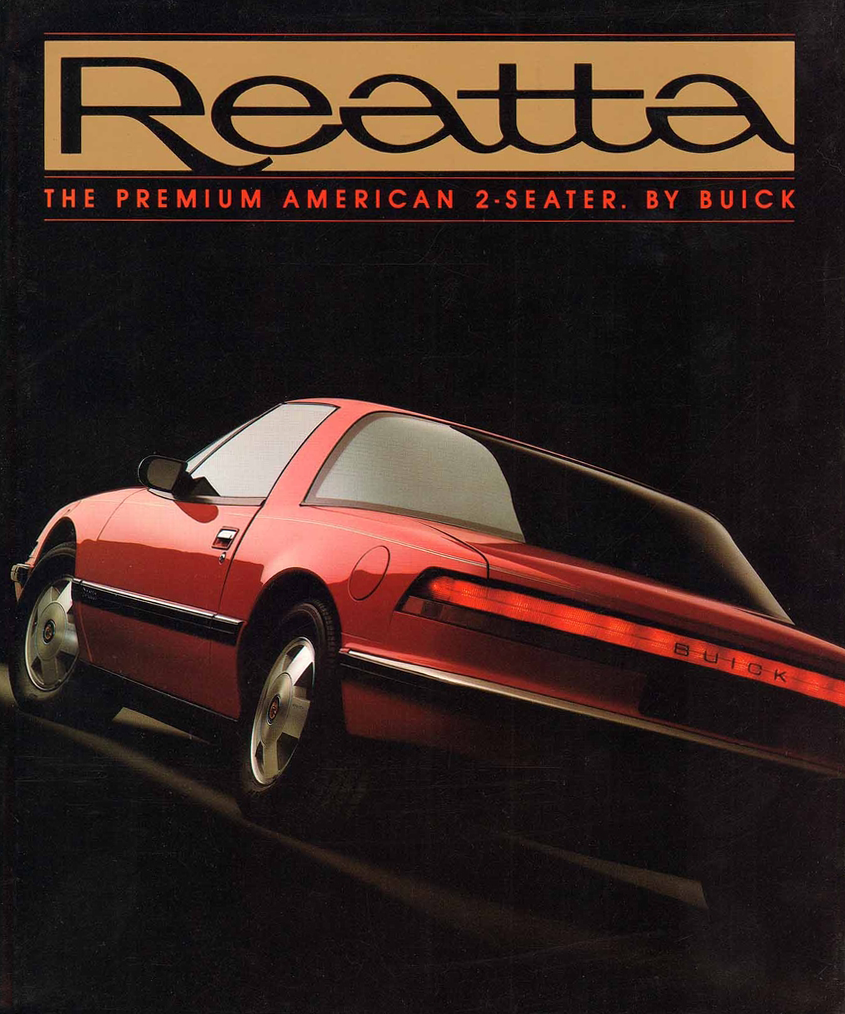Buick made things more than a bit confusing for some of its higher-end coupe buyers in the middle of the 1988 model year by introducing the two-seater Reatta. For the first time since its introduction in 1963, the Riviera was definitively no longer the top of the two-door Buick line—with a base price of $25,000, the Reatta’s barrier to entry was almost 16% higher.
“Beauty with purpose.”
Designed to be a sporty car, but with no delusions of being a sports car, Buick targeted the Reatta at a perceived niche in the two-seater market for a luxury coupe at a substantially lower price than the high-end luxury convertibles of the day. As Buick general manager Edward Mertz said in January 1988, it was “priced many thousands of dollars less than luxury and sports cars at the top end of the market.” The Reatta was not nearly as expensive as the Cadillac Allanté convertible (which had a base price of $56,533 in 1988) or the Mercedes-Benz 560SL convertible ($61,130 in that same year) but could claim to be nearly as comfortable. Compared to the Cadillac and (especially) the Mercedes, the Reatta lacked refinement and prestige—both important to potential buyers.
Despite being based on the same E-platform as the Riviera, the Reatta’s exterior styling was distinctive, even if some of the proportions looked a little off to some. However, many parts of its interior were familiar to Riviera buyers—indeed, Buick benchmarked the Reatta’s two seats to the Riviera’s driver and front passenger experience. Because of this, the Reatta’s Electronic Control Center was essentially the same as the Riviera’s, and the Reatta’s optional driver’s seat closely resembled the one in the Riviera T Type.
The Reatta’s sole powertrain was a 3800 165 bhp 3.8 liter/231 ci V6 with fuel injection paired with a four-speed automatic. Car and Driver tested a 1988 Reatta, and recorded a 0-60 mph time of 9.1 seconds in a vehicle with a 3,380-pound curb weight. Mileage was respectable—19 city/29 highway by the day’s standards (17/26 by today’s measures). With an 18.2-gallon gas tank, a Reatta owner could expect a range of 355 to 390 miles with a 10% fuel reserve—enough to take those road trips that Buick was convinced the Reatta would be primarily used for.
Standard exterior and mechanical equipment on the Reatta included Soft-Ray tinted glass, fast-ratio power steering, an independent four-wheel Gran Touring suspension, four-wheel anti-lock disk brakes, and P215/65R15 Goodyear Eagle GT+4 tires (a size still readily available) on 15-inch wheels. Inside, power windows, electric door locks, six-way power seats, and Electronic Touch Climate Control air conditioning were included. The standard and only audio system was an ETR AM stereo-FM stereo radio with seek and scan, acassette tape player with auto reverse, search/repeat, a graphic equalizer, a clock, eight Concert Sound speakers, and automatic power antenna.
Options & Production Numbers
Buick’s new coupe came loaded, with only two options in its introductory year: an electric sliding steel sunroof ($895) and a 16-way adjustable leather and suede driver’s seat ($680).
First-year sales of the Reatta were decent for a new two-seat coupe without that all-important pre-existing audience that many of its competitors had—Buick moved 4,708 of them in about nine months.
The View From 2022
There is collector interest in the Reatta, including club support. According to Hagerty’s valuation tools, all the money for a 1988 Buick Reatta coupe in #1/Concours condition is $20,600, with a far more normal #3/Good condition version going for $4,600.
Reatta coupes are often available in the Hemmings Motor News classifieds, at online auctions such as Bring a Trailer that cater to the eighties car market, and at in-person auctions such as Barrett-Jackson and Mecum. As I write this blog entry in June 2022, Hemmings has a 1988 Bright Red Reatta with saddle bucket seats and 48,000 miles for sale for $9,000.
Make mine Claret Red Metallic, please.
Other Buick coupes I have written about include the 1980 Rivera S TYPE, the 1983 Skylark T TYPE, the 1984 Regal Grand National, the 1984 Riviera T TYPE, the 1985 Somerset Regal, the 1987 GNX, and the 1987 LeSabre T Type. I seem to find Buick coupes interesting.







